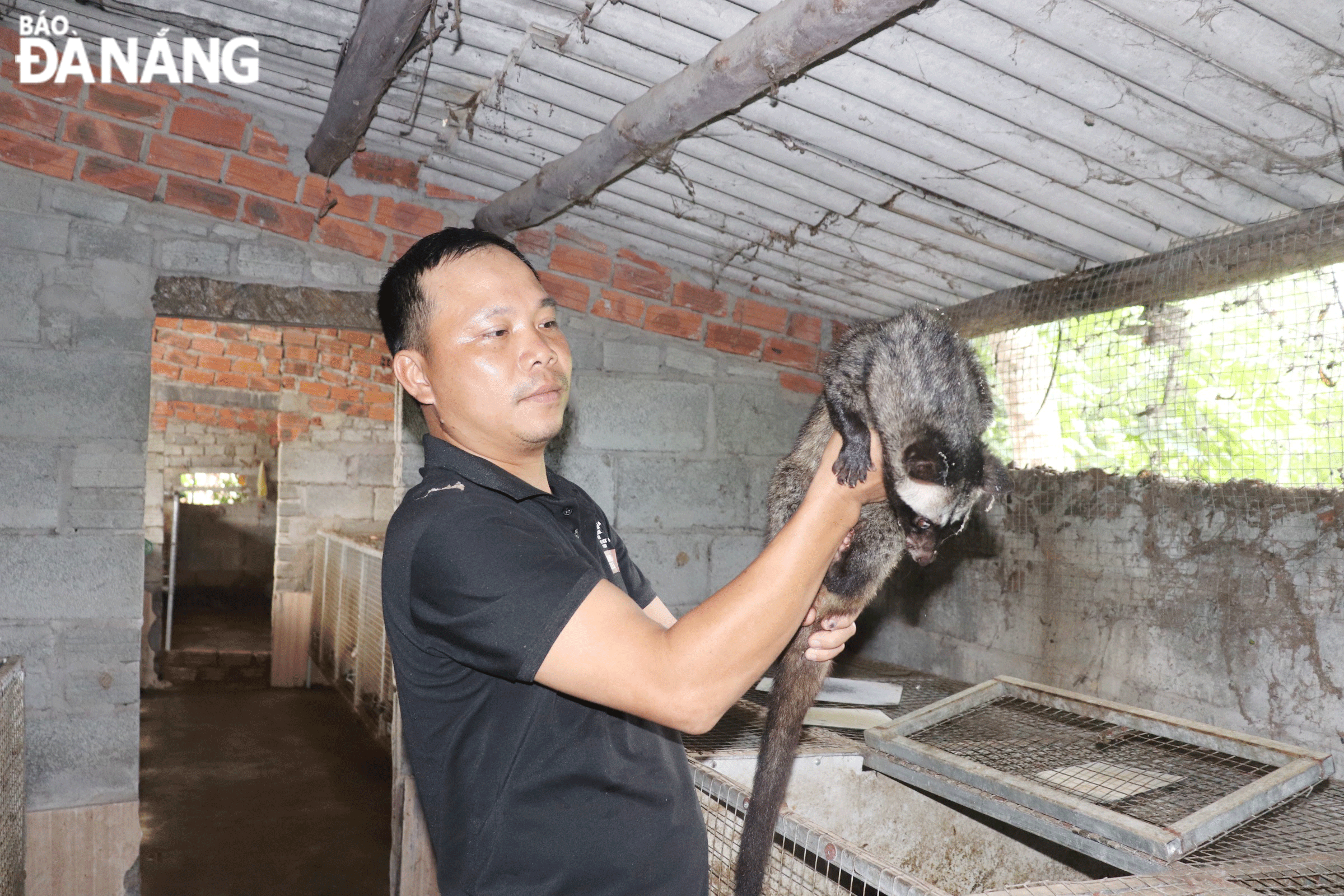Making fortune from civet cats
Mr Nguyen Huu Khanh, 37, residing in Phu Ha Village, Hoa Son Commune, Hoa Vang District, Da Nang, has successfully developed a civet cat farming model, generating hundreds of millions of VND in annual profit.
 |
| Mr Nguyen Huu Khanh successfully developed a civet cat farming model, generating hundreds of millions of VND in annual income. Photo: Khanh Ngan |
In 2013, Mr. Khanh received three young civet cats from a friend. After some time caring for them, the civet cats began to reproduce rapidly. In 2017, he built a farm and purchased additional breeding stock.
At the same time, he decided to quit his job at a hotel to focus entirely on civet cat farming, and invested VND 100 million to construct three civet cat and bamboo rat enclosures. These enclosures included areas for breeding pairs, breeding stock, and a separate area for sick civet cats. The total population consisted of 26 civet cats and 62 bamboo rats. However, due to limited food sources and unsuitable living conditions for the bamboo rats, Mr. Khanh gradually reduced their number and concentrated on civet cats.
According to Mr. Khanh, civet cats are easy to raise because they are omnivorous and suffer few illnesses. Also, they just require minimal space, and do not pollute the environment. Their enclosures must maintain a stable temperature.
Mr. Khanh's civet cat farm covers a total area of about 500m², with each cage measuring about 1m², housing one to two large or four to five small civet cats. On average, each civet cat's daily food cost is only VND 3,000-4,000, mainly consisting of bananas and tilapia.
"To increase the civet cat population quickly and achieve high productivity, the enclosures need to be elevated, quiet, warm in winter, cool in summer, and securely fenced to prevent escapes. It is also important to have perches inside the enclosure for the civet cats to exercise. This creates a natural environment, helping the civet cats to stay healthy, reproduce more, and care for their offspring better," he shared.
Currently, the civet cat farming model is proving to be highly effective. The technique of raising civet cats is not difficult, with feeding and cleaning the enclosures being the most important tasks. Compared to other livestock, civet cats have high economic value, especially as demand from restaurants and eateries continues to grow. Therefore, both civet meat and breeding stock have very favourable market prospects. Last July, Mr. Khanh sold about 20 civet cats. Each year, he earns a profit of VND 300-400 million.
Additionally, Mr. Khanh continuously improves his civet cat farming techniques by studying books and consulting experienced farmers. When acquiring new civet cats from other farms, he quarantines them before integrating them into the main enclosures. Each domesticated civet cat gives birth to three litters per year, with each litter consisting of three to four kittens.
After two months, the kittens are ready to be sold as breeding pairs for VND 7 million per pair. Three to four-month-old breeding stock weighing about 1-1.2 kg each are sold for VND 8 million per pair, including care instructions and a permit from the Forest Protection Department, which includes information on the origin and number of civet cats.
Mr. Khanh added that civet cats selected for breeding typically have shiny coats, develop well, eat well, and are active; those not meeting these standards are sold at lower prices. His customers are from across the country, including Ha Noi, Quang Tri, Thua Thien Hue, Quang Nam, and Ho Chi Minh City. He also provides technical support for customers raising civet cats.
Mr. Khanh noted that civet cat farming is not too difficult, has low costs, and yields high profits. Therefore, his family plans to expand the farm, build more enclosures, and share experiences with farmers in the commune to develop civet cat farming, meet market demand, and increase income.
Reporting by TRIEU SAN - Translating by TRUC VY